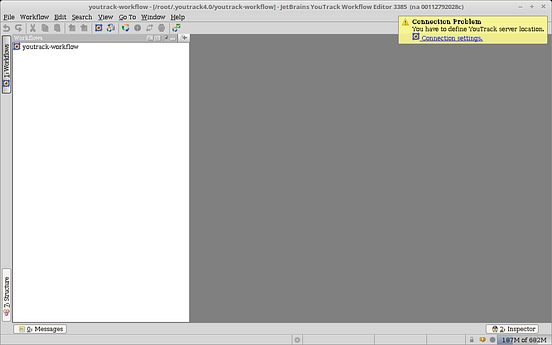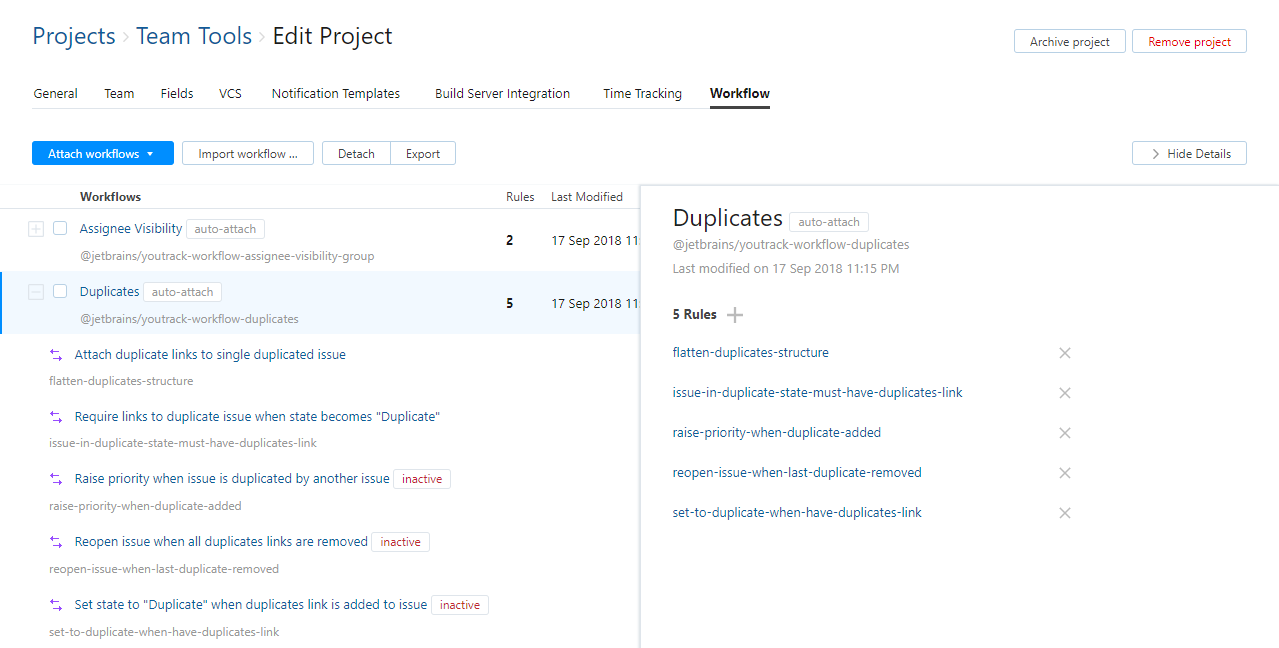
To configure the reference plugin, select Administration > Integration and select YouTrack in the Reference Plugin drop-down list. The Reference Plugin is configured on the References tab of the integration settings, in the same manner, the Defect Plugin is configured. Reference plugins can be used to retrieve additional information from IDs entered into the References field of TestRail entities, such as test cases, test runs, and milestones.
#YOUTRACK WORKFLOW HOW TO#
Keep reading to learn how to use and configure the Defect and Reference Plugins. If you have the Reference plugin configured, you’ll also be able to hover over a Reference ID to view the issue details directly from within TestRail. Here’s how the Reference URLs look in TestRail: If you use the Add link, you can copy the ID of your new YouTrack issue and enter it into any Defects or References field inside TestRail. Once configured, an Add link will appear next to each References field in your instance or project. The Reference Add URL is also configured in the same way as the Defect Add URL. The Reference View URL is configured in the same manner as described above and allows TestRail to create a direct link to a YouTrack based on an ID entered into a References field. The primary difference is Reference URLs are used for the References field on various TestRail entities (instead of the Defects field). The reference URLs are implemented in a very similar manner to Defect URLs described above. To submit one or more attachments to YouTrack, simply drag the attachment to the attachments or description areas of the push dialog or click on the area to choose an attachment from your file system. This field can be turned on and off, but cannot be customized. The YouTrack Defect Plugin supports submitting attachments to YouTrack as well. Specifies the type of this field, please see section Custom fields below for a list of supported field types (Required for custom fields) Specifies if this field is mandatory or optional and whether users are required to enter a value for this field in the Push Defect dialogue Specifies if previously selected values for this field should be remembered and restored the next time the Push Defect dialogue is opened
#YOUTRACK WORKFLOW FULL#
Specifies whether the field is displayed as a compact field (compact) or uses the full width of the dialogue (full) Specifies the display name of the field in the Push Defect dialogue (Required for custom fields)

(Required for custom fields when type is ‘date’, ‘integer’, or ‘float’) If type is set to date, integer, or float, the api_type value should be set to the same. Specifies the type of field data returned by the YouTrack API. Please see below for full list and explanation of the available field options: Option Clicking the link will open a popup dialog that enables you to push a bug report to YouTrack without leaving TestRail. When the defect plugin has been configured, a new Push link is shown next to the Defects field in the Add Test Result dialog. Project-specific plugins and configuration settings can optionally be specified under Administration > Projects. The next step is to configure all the necessary connection settings in the Configuration field. To configure the defect plugin, select Administration > Integration and select YouTrack in the Defect Plugin dropdown list. Defect pluginĭefect plugins can be used to implement a deeper bug tracker integration and TestRail comes with a ready-to-use YouTrack defect plugin. Here’s how the Defect URLs look in TestRail:Īdditionally, if you have the defect plugin configured, you’ll also be able to hover over the defect ID to view the issue details directly from within TestRail. Please make sure to replace with the actual address of the YouTrack instance you want to integrate with. Use the following example URLs to configure the addresses: You can alternatively enter separate bug tracker URLs for each project under Administration > Projects. To configure YouTrack’s Defect URLs in TestRail, select Administration > Integration.

If you see the Add link, you can copy the ID of your new YouTrack issue and enter it into any Defects or References field inside TestRail. This link allows you to jump to YouTrack’s New Issue form to report a new bug. Once the URL is configured, a new Add link appears next to the Defects field in the Add Test Result dialog and the ‘Defects’ menu in TestRail’s Defect From Anywhere feature. The Defect Add URL is used to create a link to the issue creation screen inside YouTrack. The Defect View URL is used to build a link to YouTrack based on the Defect ID, so you can simply click on an ID to open the issue directly in YouTrack. There are two types of URLs: View URLs and Add URLs. The defect URLs are used to let TestRail know how to convert a Defect ID into a URL for your YouTrack instance.


 0 kommentar(er)
0 kommentar(er)
